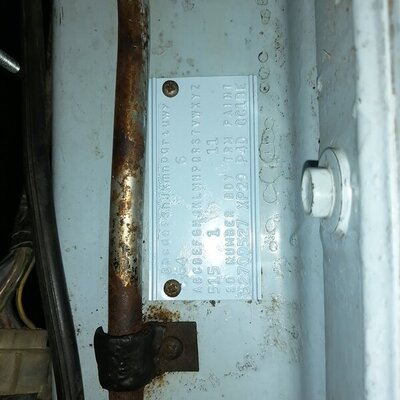So this week I was finally able to install my reciprocating assembly. I feel like I have measured absolutely everything, and I have, but that way there is no guesswork!
First, I assembled my pistons and rods. Be sure the rods are mounted the correct way. Generally, notches always are mounted outboard, but the rods also have different machined sides depending if they are against the crank or another rod on the journal.

Next, I did a final polish of my crank. Polishing it is really a pretty simple and low tech thing. It gets put in a lathe and then a device that runs emery cloth (kind of like a hand held band saw) is laid on each main and journal. You can't take a picture when running as two hands are required, but hopefully this gives the general idea of how it's done.

Then it was time to lube everything up and install. First, I dropped in the crank and rear main seal. Here I got an unpleasant surprise (sorry, no pictures). To set up the end play, the #3 cap has to be perfectly aligned top to bottom. This is done by having it snug, but not final tightened, and then whacking the crank with a brass hammer forwards, then backwards. This aligns the thrust bearings to the crank. The end play is supposed to be .004" to .007". Mine is .009" with a brand new crank! There is nothing reasonable that can be done about this, it just means that a bit more oil will squirt out there. But I am annoyed as it means the crank was not made as it should be. There is no time to address it now, and the engine will run fine as it is, but this is a Scat quality control issue.
Some light oil on the rings and piston skirt, plus assembly lube on the bearings, and it was time to install the pistons. Ideally, a fixed metal cone of the exact size can be used to install them (top of picture), but none was available at 4.070, so I used the locking pliers and ring.

Before dropping the pistons in, make sure the rings are aligned as needed. The two compression rings should be offset a bit (I use the seam of the piston skirt)...

...as should the oil ring seam is on the opposite side (and the small rings above that are also offset - hard to see in picture).

Then it is time to whack-a-mole and insert them, being careful not to scratch the crank (note red rag as extra protection in case)!

Done! All pistons installed and ready to go!

Finally, on the front K-member, it is slowly coming back together. This is the RoadKill part, as I am replacing bushings and alike, but few of the pieces are getting painted and restored. That will need to be for another time.

Progress! Hopefully this thing will be done in time for departure on September 7th!
Hawk
First, I assembled my pistons and rods. Be sure the rods are mounted the correct way. Generally, notches always are mounted outboard, but the rods also have different machined sides depending if they are against the crank or another rod on the journal.
Next, I did a final polish of my crank. Polishing it is really a pretty simple and low tech thing. It gets put in a lathe and then a device that runs emery cloth (kind of like a hand held band saw) is laid on each main and journal. You can't take a picture when running as two hands are required, but hopefully this gives the general idea of how it's done.
Then it was time to lube everything up and install. First, I dropped in the crank and rear main seal. Here I got an unpleasant surprise (sorry, no pictures). To set up the end play, the #3 cap has to be perfectly aligned top to bottom. This is done by having it snug, but not final tightened, and then whacking the crank with a brass hammer forwards, then backwards. This aligns the thrust bearings to the crank. The end play is supposed to be .004" to .007". Mine is .009" with a brand new crank! There is nothing reasonable that can be done about this, it just means that a bit more oil will squirt out there. But I am annoyed as it means the crank was not made as it should be. There is no time to address it now, and the engine will run fine as it is, but this is a Scat quality control issue.
Some light oil on the rings and piston skirt, plus assembly lube on the bearings, and it was time to install the pistons. Ideally, a fixed metal cone of the exact size can be used to install them (top of picture), but none was available at 4.070, so I used the locking pliers and ring.
Before dropping the pistons in, make sure the rings are aligned as needed. The two compression rings should be offset a bit (I use the seam of the piston skirt)...
...as should the oil ring seam is on the opposite side (and the small rings above that are also offset - hard to see in picture).
Then it is time to whack-a-mole and insert them, being careful not to scratch the crank (note red rag as extra protection in case)!
Done! All pistons installed and ready to go!
Finally, on the front K-member, it is slowly coming back together. This is the RoadKill part, as I am replacing bushings and alike, but few of the pieces are getting painted and restored. That will need to be for another time.
Progress! Hopefully this thing will be done in time for departure on September 7th!
Hawk


















